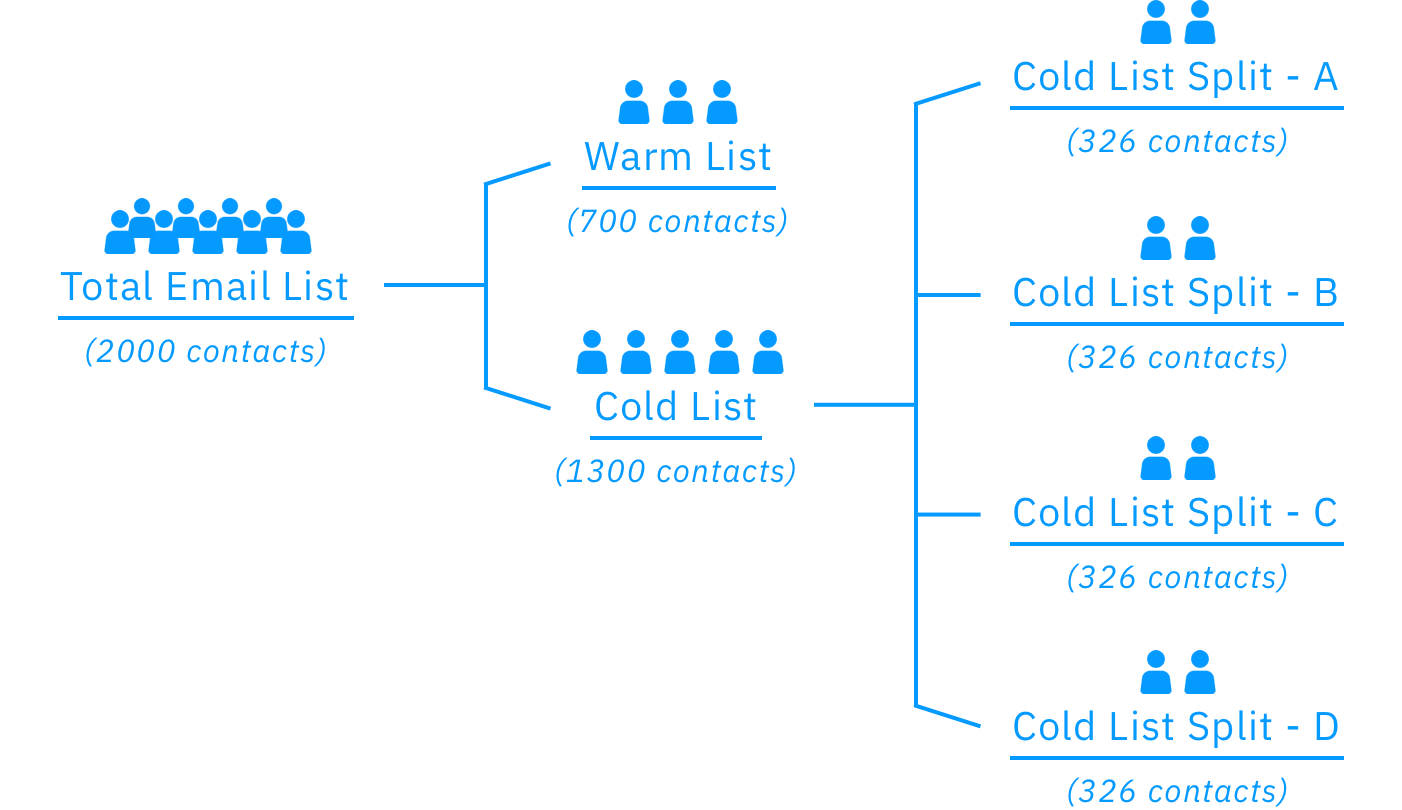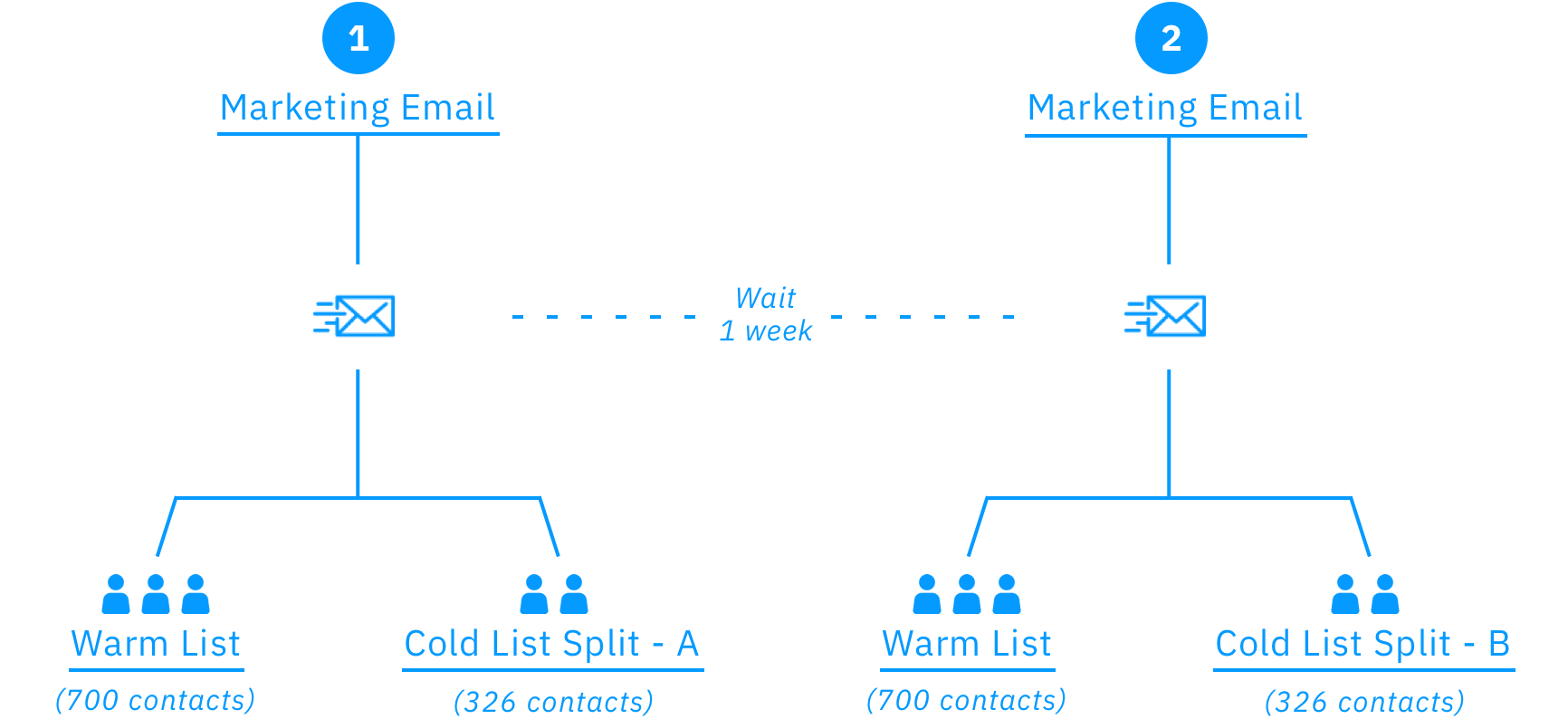Today it’s harder than ever for your marketing emails to land in intended recipients’ inboxes. Inbox placement is based on sender reputation, which is built on email authentication and engagement. And if your email does manage to land in a reader’s inbox, then you’re then faced with another challenge—the email client’s filtering system. Email clients are getting smarter and it’s time for email marketers to follow suit.
If you’re sending to a cold list, you might feel these challenges more acutely than someone sending to a warm list. Because the recipients of an email sent to a cold list may not remember or know you, you’re more likely to see poor engagement in the form of low open rates, unsubscribes, and spam complaints. Low open rates can stem from emails being delivered to spam folders; equally, they can indicate that the subject matter is not relevant to a reader. Unsubscribes usually show that a particular user doesn’t consider themselves an ideal prospect. And while spam can be defined differently by each reader, these complaints are often registered when unsubscribing isn’t straightforward. If your open rates are low, your sender reputation can be impacted negatively. Furthermore, as this HubSpot article details, if an inordinate amount of people are reporting spam, your sender reputation will take a hit. An acceptable rate, for instance, is one in every 1000.
With this in mind, it’s clear that sending exclusively to a cold list is not a viable sending strategy if your aim is to land in recipients’ inboxes. Thankfully, we’ve identified strategies to improve your inbox placement while incorporating names from your cold list.
Emails sent to cold lists don’t perform as well as they used to
Emails perform best when they are relevant and timely which is why sending to a cold list is hard. Our goal is to help you safely send to your full list which can include unengaged or cold leads. The strategy we’ve outlined allows you to continue to send to your warm leads while integrating the cold leads from your list.
ReturnPath highlights email engagement among the key factors that affect sender reputation. Since we know that the engagement levels of your emails play such an important role in your sender reputation, and consequently, your inbox placement, you’ll want to ensure that the majority of your list is comprised of these highly-engaged, warm leads. ISPs like Gmail take into consideration how the email is performing and place it accordingly. By sending predominantly to people who have engaged with your emails, you’re increasing the chances that your email is interacted with. The more your email is interacted with, the better your inbox placement will be. As your engagement rates improve, ISPs will be more likely to place your emails into inboxes rather than spam folders.
The table below clearly illustrates the improvement in email engagement rates for clients who have incorporated this sending strategy compared with clients who have chosen a more traditional sending strategy. Each client’s email list for this comparison was approximately 1,500 contacts.
| Followed Integrated Send Strategy | Did Not Follow Integrated Send Strategy | |||
|---|---|---|---|---|
| Open Rate | CTR | Open Rate | CTR | |
| Email 1 | 38.00% | 3.62% | 10.40% | 0.73% |
| Email 2 | 40.30% | 4.37% | 9.77% | 0.96% |
| Email 3 | 33.00% | 3.86% | 8.42% | 1.18% |
| Email 4 | 33.60% | 3.81% | 5.57% | 0.24% |
| Email 5 | 41.50% | 4.68% | 4.58% | 0.40% |
| Average | 37.28% | 4.07% | 7.75% | 0.70% |
In the next example, we tracked the increase of a client’s email performance by comparing their metrics from before they started following our sending strategy with their metrics after following our sending strategy. Again, we see tremendous improvement in both open rates and click-through rates after using the sending strategy described in this article.
| Before Following Integrated Send Strategy | After Following Integrated Send Strategy | |||
|---|---|---|---|---|
| Open Rate | CTR | Open Rate | CTR | |
| Email 1 | 7.16% | 1.59% | 24.20% | 4.64% |
| Email 2 | 5.28% | 0.56% | 23.60% | 2.82% |
| Email 3 | 4.66% | 0.46% | 23.90% | 3.60% |
| Email 4 | 6.00% | 0.78% | 24.50% | 3.20% |
| Email 5 | 6.12% | 0.93% | 25.30% | 3.02% |
| Average | 5.84% | 0.86% | 24.30% | 3.46% |
Segment your list for optimal inbox placement
Start by segmenting your list into an engaged group, your ‘Warm List,’ and an unengaged group, your ‘Cold List.’ We define engaged as anyone who has opened an email or clicked an email in the last 90 days, the Cold List would have the opposite criteria. Next, create even splits of your Cold List. The size of these splits should not be greater than half of your Warm List.

This calculator is a very helpful tool for determining the number and size of your cold list splits. Input the total number of leads from your warm and cold lists, respectively. It will generate the number and size of your cold list splits.
When sending your emails, choose your Warm List and one Cold List Split at a time. Warm List + Cold List Split-A would be first. Next, you’d send to Warm List + Cold List Split-B. The following email would be addressed to Warm List + Cold List Split C, and you’d follow that pattern until you’ve sent to each of your cold list splits.

This method allows you to maintain high email engagement rates, which influence ISPs to deliver your emails to the recipients’ inboxes rather than their spam folders. By incorporating the previously unengaged names in this way, you maximize the likelihood of your emails landing your recipients’ inboxes because your email engagement rates are higher.
Additionally, since the Cold List segment is made up of people who have not opened or clicked your emails, as these emails land in their inboxes and they open or click them, those individuals will be moved from the Cold List to the Warm List, automatically. As you use this method of sending, you’ll notice an increase in the size of your Warm List.
As you work to put this in practice, remember to be smart with your email marketing. The idea that you can buy a list of names, blast emails at them, land in their inboxes, and see high engagement is outdated and ineffective. Be cautious with your sender reputation, strategic with your emails, alert to the changing landscape, and flexible enough to adjust when the time is right.


